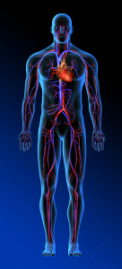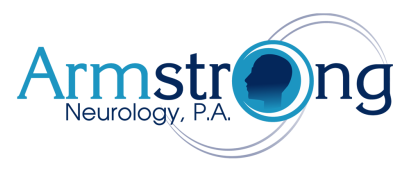Stroke

A stroke, or cerebral infarction is due to an interruption in the blood flow to the brain. This is most commonly due to a small clot breaking off from a larger blood vessel and lodging in a more distal, smaller blood vessel blocking the flow of blood to that part of the brain.
A hemorrhagic stroke is associated with disruption of the blood vessels and leakage of blood into the brain.
The management of stoke involves a coordinated effort between the neurologist, hospitalist, and nursing staff. In certain situations other services such as neurosurgery may also be involved.
About 795,000 Americans each year suffer a new or recurrent stroke. That means, on average, a stroke occurs every 40 seconds.
Stroke kills more than 137,000 people a year. That's about 1 of every 18 deaths. It's the No. 3 cause of death behind diseases of the heart and cancer.
On average, every 4 minutes someone dies of stroke.
About 40 percent of stroke deaths occur in males, and 60 percent in females.
The 2006 stroke death rates per 100,000 population for specific groups were 41.7 for white males, 41.1 for white females, 67.7 for black males and 57.0 for black females.
Americans will pay about $73.7 billion in 2010 for stroke-related medical costs and disability.
As the brain has different areas which control different functions, the appearance of a stroke will vary with the part of the brain affected. Some general symptoms of stroke include:
Numbness
Weakness
Dizziness
Confusion
Partial visual loss
Incoordination
Unsteady gait
Changes in speech:
- Slurred speech
- Loss of speech
- Inability to understand speech
The sudden onset of any of these symptoms warrants immediate neurological evaluation. When in doubt it is best to immediately contact emergency services for transport to the emergency room and further medical evaluations.
A hemorrhagic stroke is associated with disruption of the blood vessels and leakage of blood into the brain.
The management of stoke involves a coordinated effort between the neurologist, hospitalist, and nursing staff. In certain situations other services such as neurosurgery may also be involved.
About 795,000 Americans each year suffer a new or recurrent stroke. That means, on average, a stroke occurs every 40 seconds.
Stroke kills more than 137,000 people a year. That's about 1 of every 18 deaths. It's the No. 3 cause of death behind diseases of the heart and cancer.
On average, every 4 minutes someone dies of stroke.
About 40 percent of stroke deaths occur in males, and 60 percent in females.
The 2006 stroke death rates per 100,000 population for specific groups were 41.7 for white males, 41.1 for white females, 67.7 for black males and 57.0 for black females.
Americans will pay about $73.7 billion in 2010 for stroke-related medical costs and disability.
As the brain has different areas which control different functions, the appearance of a stroke will vary with the part of the brain affected. Some general symptoms of stroke include:
Numbness
Weakness
Dizziness
Confusion
Partial visual loss
Incoordination
Unsteady gait
Changes in speech:
- Slurred speech
- Loss of speech
- Inability to understand speech
The sudden onset of any of these symptoms warrants immediate neurological evaluation. When in doubt it is best to immediately contact emergency services for transport to the emergency room and further medical evaluations.
Click the link below to visit the American Stroke Association Website:
TPA protocol
Acute Ischemic Stroke is a medical emergency. The Stroke Council of The American Heart Association has made recommendations based on the NINDS Study. These recommendations are summarized as follows:
Exclusion criteria for TPA:
ii. Oral anticoagulants
iii. PT > 15s, INR > 1.7
iv. Use of heparin in past 48 hours and a prolonged PTT
Acute Ischemic Stroke is a medical emergency. The Stroke Council of The American Heart Association has made recommendations based on the NINDS Study. These recommendations are summarized as follows:
Exclusion criteria for TPA:
- Age less than 18
- Previous CVA or severe head trauma in past 3 months, or any h/o ICH
- Severe CVA with coma or very mild symptoms with NIHSS less than 4, or symptoms rapidly improving
- Seizure at onset of CVA
- Signs of CVA on CT: (these suggest a time-frame greater than 3 hours)
- Sulcal effacement
- Mass effect
- Edema
- SBP>185 or DBP>110
- BS <50 or >400
- MI with pericarditis
- Pregnancy or lactation (menstruation is not a contraindication)
- Risks of hemorrhage:
- ICH on CT or a history of ICH in the past
- Bleeding diathesis
ii. Oral anticoagulants
iii. PT > 15s, INR > 1.7
iv. Use of heparin in past 48 hours and a prolonged PTT
- Recent GI or GU hemorrhage within 21 days
- Recent major surgery or trauma within 14 days
Formal Stroke Guidelines:


